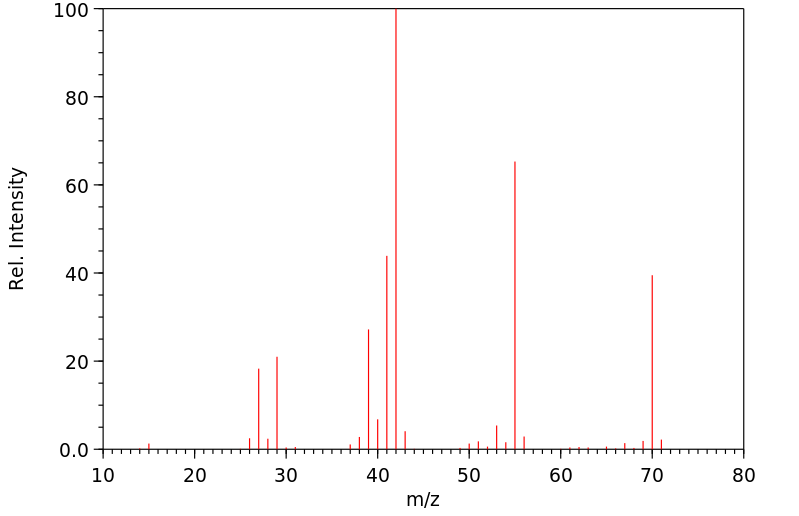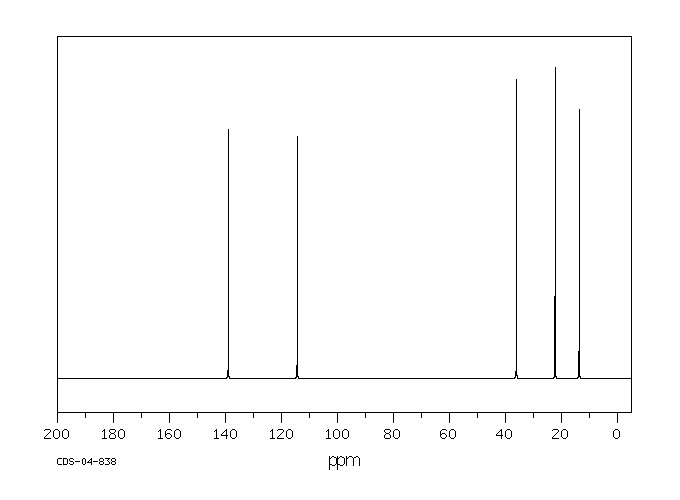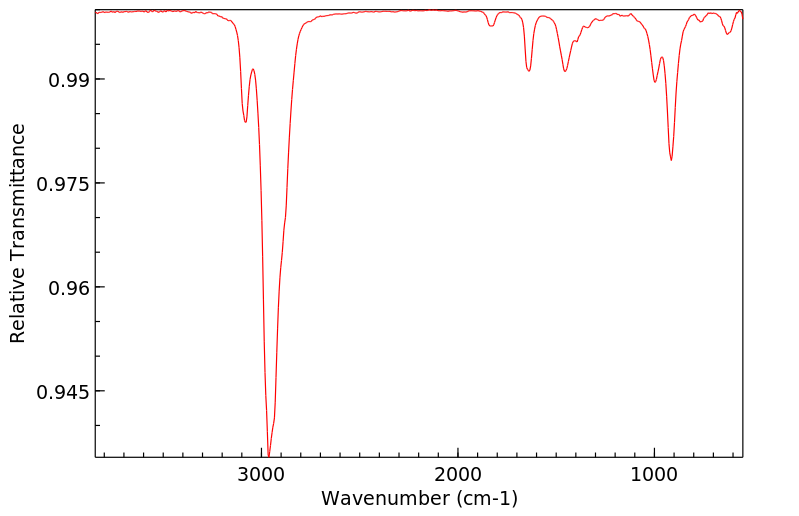| Name: | Pentene (Techn) Material Safety Data Sheet |
| Synonym: | Amylene |
| CAS: | 25377-72-4 |
Section 1 - Chemical Product MSDS Name:Pentene (Techn) Material Safety Data Sheet
Synonym:Amylene
Section 2 - COMPOSITION, INFORMATION ON INGREDIENTS | CAS# | Chemical Name | content | EINECS# |
| 25377-72-4 | Pentene | 100 | 246-916-6 |
Hazard Symbols: F
Risk Phrases: 11
Section 3 - HAZARDS IDENTIFICATION EMERGENCY OVERVIEW
Highly flammable.The toxicological properties of this material have not been fully investigated.Highly flammable.
Potential Health Effects
Eye:
May cause eye irritation. May cause chemical conjunctivitis and corneal damage.
Skin:
May cause skin irritation. May be harmful if absorbed through the skin.
Ingestion:
May cause gastrointestinal irritation with nausea, vomiting and diarrhea. The toxicological properties of this substance have not been fully investigated. Ingestion of large amounts may cause CNS depression.
Inhalation:
May cause respiratory tract irritation. The toxicological properties of this substance have not been fully investigated. May cause kidney damage. Aspiration may lead to pulmonary edema. Vapors may cause dizziness or suffocation.
Chronic:
No information found.
Section 4 - FIRST AID MEASURES Eyes: In case of contact, immediately flush eyes with plenty of water for at least 15 minutes. Get medical aid.
Skin:
In case of contact, flush skin with plenty of water. Remove contaminated clothing and shoes. Get medical aid if irritation develops and persists. Wash clothing before reuse.
Ingestion:
If swallowed, do not induce vomiting unless directed to do so by medical personnel. Never give anything by mouth to an unconscious person. Get medical aid.
Inhalation:
If inhaled, remove to fresh air. If not breathing, give artificial respiration. If breathing is difficult, give oxygen. Get medical aid.
Notes to Physician:
Treat symptomatically and supportively.
Section 5 - FIRE FIGHTING MEASURES General Information:
As in any fire, wear a self-contained breathing apparatus in pressure-demand, MSHA/NIOSH (approved or equivalent), and full protective gear. Vapors may form an explosive mixture with air.
Vapors can travel to a source of ignition and flash back. During a fire, irritating and highly toxic gases may be generated by thermal decomposition or combustion. Use water spray to keep fire-exposed containers cool. Extremely flammable liquid and vapor. Containers may explode in the heat of a fire. Will be easily ignited by heat, sparks or flame.
Extinguishing Media:
For small fires, use dry chemical, carbon dioxide, water spray or alcohol-resistant foam. For large fires, use water spray, fog, or alcohol-resistant foam. Use water spray to cool fire-exposed containers. Water may be ineffective. Do NOT use straight streams of water.
Section 6 - ACCIDENTAL RELEASE MEASURES General Information: Use proper personal protective equipment as indicated in Section 8.
Spills/Leaks:
Absorb spill with inert material (e.g. vermiculite, sand or earth), then place in suitable container. Avoid runoff into storm sewers and ditches which lead to waterways. Clean up spills immediately, observing precautions in the Protective Equipment section. Remove all sources of ignition. Use a spark-proof tool. A vapor suppressing foam may be used to reduce vapors.
Section 7 - HANDLING and STORAGE Handling:
Wash thoroughly after handling. Remove contaminated clothing and wash before reuse. Ground and bond containers when transferring material. Avoid contact with eyes, skin, and clothing. Empty containers retain product residue, (liquid and/or vapor), and can be dangerous. Keep away from heat, sparks and flame. Avoid ingestion and inhalation. Do not pressurize, cut, weld, braze, solder, drill, grind, or expose empty containers to heat, sparks or open flames.
Storage:
Keep away from heat, sparks, and flame. Keep away from sources of ignition. Store in a cool, dry place. Keep container closed when not in use. Flammables-area. Refrigerator/flammables.
Section 8 - EXPOSURE CONTROLS, PERSONAL PROTECTION Engineering Controls:
Facilities storing or utilizing this material should be equipped with an eyewash facility and a safety shower. Use process enclosure, local exhaust ventilation, or other engineering controls to control airborne levels.
Exposure Limits CAS# 25377-72-4: Personal Protective Equipment Eyes: Wear chemical splash goggles.
Skin:
Wear appropriate protective gloves to prevent skin exposure.
Clothing:
Wear appropriate protective clothing to minimize contact with skin.
Respirators:
A respiratory protection program that meets OSHA's 29 CFR 1910.134 and ANSI Z88.2 requirements or European Standard EN 149 must be followed whenever workplace conditions warrant respirator use.
Section 9 - PHYSICAL AND CHEMICAL PROPERTIES Physical State: Liquid
Color: colorless
Odor: Not available.
pH: Not available.
Vapor Pressure: 60.8 mm Hg @ 25 deg C
Viscosity: Not available.
Boiling Point: 37 deg C
Freezing/Melting Point: 0 deg C
Autoignition Temperature: Not available.
Flash Point: -44 deg C ( -47.20 deg F)
Explosion Limits, lower: Not available.
Explosion Limits, upper: Not available.
Decomposition Temperature:
Solubility in water: Negligible.
Specific Gravity/Density: .6500g/cm3
Molecular Formula: C5H10
Molecular Weight: 70.13
Section 10 - STABILITY AND REACTIVITY Chemical Stability:
Stable under normal temperatures and pressures.
Conditions to Avoid:
Incompatible materials, ignition sources, excess heat, strong oxidants.
Incompatibilities with Other Materials:
Strong oxidizing agents.
Hazardous Decomposition Products:
Carbon monoxide, carbon dioxide.
Hazardous Polymerization: Has not been reported
Section 11 - TOXICOLOGICAL INFORMATION RTECS#:
CAS# 25377-72-4 unlisted.
LD50/LC50:
Not available.
Carcinogenicity:
Pentene - Not listed by ACGIH, IARC, or NTP.
Section 12 - ECOLOGICAL INFORMATION
Section 13 - DISPOSAL CONSIDERATIONS Dispose of in a manner consistent with federal, state, and local regulations.
Section 14 - TRANSPORT INFORMATION IATA
Shipping Name: 1-PENTENE
Hazard Class: 3
UN Number: 1108
Packing Group: I
IMO
Shipping Name: 1-PENTENE
Hazard Class: 3
UN Number: 1108
Packing Group: I
RID/ADR
Shipping Name: 1-PENTENE
Hazard Class: 3
UN Number: 1108
Packing group: I
Section 15 - REGULATORY INFORMATION European/International Regulations
European Labeling in Accordance with EC Directives
Hazard Symbols: F
Risk Phrases:
R 11 Highly flammable.
Safety Phrases:
S 9 Keep container in a well-ventilated place.
S 16 Keep away from sources of ignition - No
smoking.
S 33 Take precautionary measures against static
discharges.
WGK (Water Danger/Protection)
CAS# 25377-72-4: No information available.
Canada
CAS# 25377-72-4 is listed on Canada's DSL List.
CAS# 25377-72-4 is not listed on Canada's Ingredient Disclosure List.
US FEDERAL
TSCA
CAS# 25377-72-4 is listed on the TSCA inventory.
SECTION 16 - ADDITIONAL INFORMATION N/A










